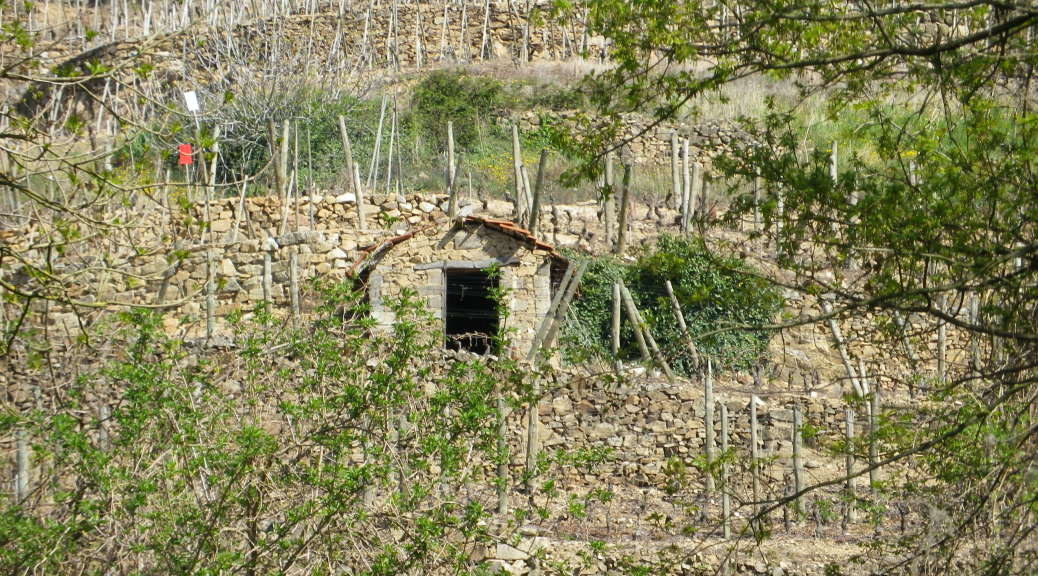What I Learned
Three great appellations begin about 15 miles south of Lyons. They range along the right bank of the Rhone and are, from north to south: the famous Cote Rotie, Condrieu, and St Joseph. In two of the three appellations, the Syrah varietal reigns supreme.
The Saint Joseph appellation is the largest. Its vineyards line the steep banks of the Rhone for about 60 kilometers, or 37 miles, and includes 26 villages and towns, mostly located along its shores. The vineyard soils are predominantly granitic.
This area has a history for wine-making, but the appellation status came only in 1956. Before that, the Romans and Gallo-Romans cultivated grapes and produced wine here. The tradition must have continued fairly unabated because in the late middle ages, some of the wine from this area became a favorite at the court. At the time, it was produced by monks, and was known as Mauves wine, the name of the area the monks cultivated.
To this day, the best wines of the appellation are considered to come from around the Mauves area, that is to say, in and around the town of Tournon-sur-Rhone, which includes several the well-regarded vineyards.
The cultivated vines here are overwhelmingly Syrah. These produce the St Joseph red wines. They may contain up to 10 percent of the white varietals, Roussanne and Marsanne. The resulting product is intended to drink fairly young, before the Cote Rotie vintages. As a result, it is usually lighter in style than a Cote Rotie, or other red Rhones.
Equally as delicious, but only about ten percent of the total wine production, are the Saint Joseph white wine blends made from the Roussanne and Marsanne. Likewise accorded appellation Saint Joseph Controllee status, they are usually fairly full-bodied and aromatic wines, and best appreciated slightly chilled.
What I Tasted
2013 Cuvee: 90% Marsanne, 10% Roussanne, “Vania”, Appellation Saint Joseph Controlee, Domaine Guy Farge: a dry white wine cuvee with a medium gold color; slightly floral and spicy nose, with flavors of spice, yellow fruits and sweet flowers; a medium-bodied wine with very little acidity.
2013 Cuvee: 50% Roussanne, 50% Marsanne , “Tradition”, Appellation Saint Joseph Controlee, Domaine Lionel Faury: a dry white wine cuvee with light gold color; ripe yellow fruit nose, and flavors of same with toasted nut and vanilla on the finish; a medium-bodied wine with fairly low acidity.
2012 Cuvee: 50% Marsanne, 50% Roussanne, “Granit”, Chante Perdrix, Appellation Saint Joseph Controlee, Vignes Verzier, Chavanay: this dry white wine cuvee has a dark gold color; sweet nose, ripe apricots, vanilla flavors, and hint of smoke and wood; a full-bodied wine with mild acidity.
2013 Syrah, Appellation Saint Joseph Protegee, Maison Christophe Pichon; a dry red wine with ruby red color; a medium to full-bodied wine with medium-high tannins, hints of spice, smoke and dried cherry notes.
2013 Cuvee, Empreinte, Appellation Saint Joseph Protegee, Cave Chante-Perdrix, Vignobles Verzier: a dry red wine with inky dark red color; slight floral and tobacco nose; smoke and spicy cherry notes, medium-low tannins.
2012, Syrah, Poivre et Sel, Appellation Saint Joseph Controlee, Domaine Francois Villars: a dry red wine with dark red color; a powerful red with fruity and spicy notes, slightly tannic and full-bodied.
2011 Syrah, PV, Appellation Saint Joseph Controlee, Domaine Verzier: a dry red wine with dark purple red color, this relatively light-bodied red had a slight floral nose, notes of green pepper and a bit of peppery spice; medium-low acidity, and high tannins.

One thought on “Wine Notes: Appellation Saint Joseph”
Comments are closed.